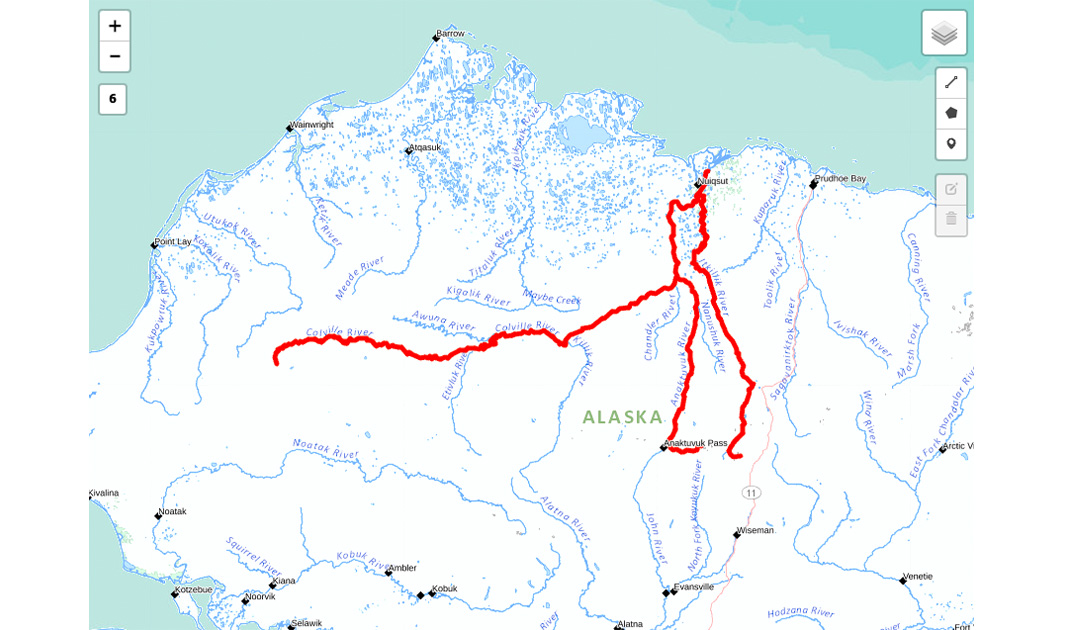
With Pacific salmon species already struggling to cope with the effects of climate change, might concerns about their future be unfounded? A University of Alaska Fairbanks research team observed spawning chum salmon in two rivers in Alaska’s North Slope region last September – a sign of adaptation to global warming?
While established salmon populations like those in California are declining, more salmon are being observed in Arctic rivers. As part of a project led by the University of Alaska Fairbanks (UAF), the research team discovered about 100 chum salmon (Oncorhynchus keta) in the Anaktuvuk and Itkillik rivers, which enter the Colville River, in Alaska’s North Slope Borough. All salmon caught by the researchers were either spawning or had completed their spawning process.
While the researchers are not the first to discover spawning chum salmon in rivers in Alaska’s North Slope Borough – the fish are sighted and caught regularly – their numbers have been increasing in recent years. Chum salmon are the most widespread salmon species in the North Pacific. Occurring throughout the North Pacific, they can be found all over Alaska. However, their numbers declined in the Yukon and Kuskokwim River systems in 2020 and 2021, which the National Oceanic and Atmospheric Administration (NOAA) attributes in part to rising temperatures.
According to Peter Westley, associate professor in UAF’s College of Fisheries and Ocean Sciences and leader of the project, their discovery is consistent with the hypothesis that salmon are being pushed north due to their traditional habitat changing. In a university press release, he stated that in most parts of their range, it has gotten too warm for salmon and they are starting to die off. “In the Arctic, the water is getting warm enough and they’re starting to blink on,” Westley said.

Back in December 2022, scientists, community members and indigenous fishermen addressed the increasing number of salmon observed in the Arctic Ocean and their possible origins at an Alaska Sea Grant program workshop. Researchers also became aware of the Colville River watershed southwest of Prudhoe Bay as a result of this workshop.
“One major theme was that salmon have always been on the North Slope, but they’re also increasing in recent years,” says Elizabeth Mik’aq, a student at UAF who helped organize the workshop. “I don’t want to portray our discovery as the first ever. That assumes no one has ever seen this before, and people have been there for thousands of years.”
Whether chum salmon reproduction in Arctic rivers will be successful is still unclear. If the rivers freeze completely during winter, developing embryos will not stand a chance. Therefore, the research team has placed temperature sensors in some of the salmon egg clutches.
The researchers plan to return in the fall of 2024 to search for juvenile salmon and new spawning adult salmon. In addition, the team will analyze salmon bones and tissues to determine whether the fish have spent their entire lives in Arctic waters.

Chum salmon are the second largest Pacific salmon species, reaching up to 100 centimeters in length; only Chinook salmon (Oncorhynchus tshawytscha) grows larger. Like all salmon, chum salmon are anadromous, i.e. adults migrate from their marine habitat to fresh waters to spawn. Juvenile chum salmon, unlike other Pacific salmon, remain in rivers for a relatively short time and migrate downstream to estuaries and marine waters shortly after hatching. Once they have grown larger, they migrate to the open North Pacific. At the age of three to six years, they return to the waters where they had hatched to spawn themselves. They usually spawn in the lower reaches of rivers and streams and migrate no further than about 100 kilometers from the ocean. Following spawning, all chum salmon perish, providing the nutrient substrate for their offspring.
Julia Hager, PolarJournal
More about this topic





